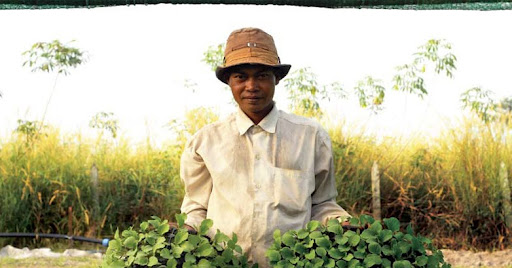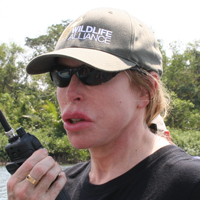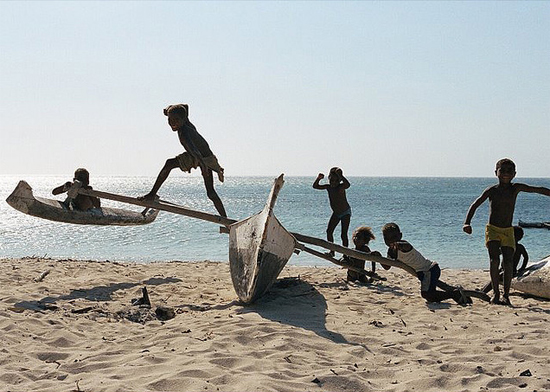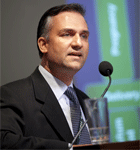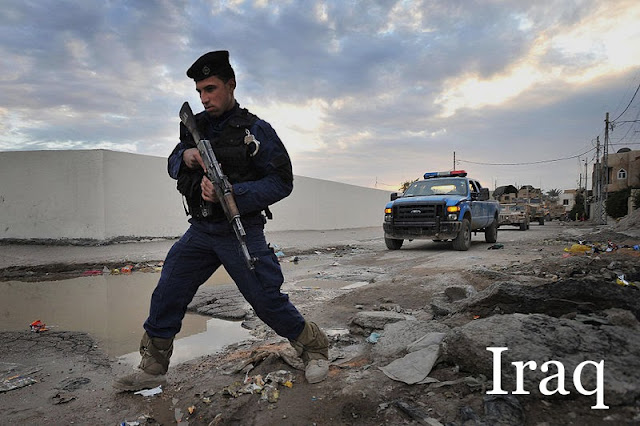Showing posts from category community-based.
-
Those Who Would Carry the Water
›December 24, 2010 // By Mark NepoThis article will appear as the introduction in the forthcoming Fetzer Institute and Wilson Center publication, Our Shared Future: Environmental Pathways to Peace, based on an event cosponsored at the Wilson Center in January 2009.
It is fitting to say “welcome,” since this timeless greeting originally meant “come to the well.” Let me try to describe the well we are coming to. We are at once trying to gather the best experience and thinking of current environmental practice, to help advance the issue of water as a resource, and to use environmental work around water as a case study for the lessons and challenges of global community engagement. In convening leading practitioners and thinkers in the field of environmental peace-building and focusing on the ever-present issue of water, we hope to surface the strengths of human resources and how they impact the emerging global community.
In truth, the issues that bring us here have been present in the human condition forever. They are spoken to in every tradition. A few stories will help create a context for our time together.
If we turn to the Hindu tradition, we learn that Saraswati is the goddess of knowledge, music, and the arts. Her name means “the one who flows” and legend has it that she was born of the Saraswati River, which is an invisible river that carries the waters that sustain all life. From the earliest times, in many traditions, the waters that sustain all life refer to both natural resources and human and spiritual resources; actual water and the water we have come to know since the beginning of time as wisdom and love.
In Hindu lore, Saraswati’s ageless counterpart on earth is the serpent-demon, Vritrassura, who is driven to hoard all the Earth’s water. And so the endless struggle begins; at least this is one tradition’s beginning. Thankfully, in the Rig-Veda, the sacred collection of Sanskrit hymns, we are given hope as Saraswati – with help from her brother Ganesh, the provider and remover of obstacles, and Indra, the god who connects all things – kills the demon who would hoard the Earth’s water.
But clearly, throughout the ages, those who would carry the water and those who would hoard the water have appeared again and again and again. This is why we are here. Unspoken or not, unaware or not, we are by care and kinship of the lineage that would carry the water.
If we turn to the Haitian tradition, we find a very telling teaching story called The Chief of the Well. This story speaks of a time of drought when the streams are dry and the wells are parched. There is no place to get water. The animals meet to discuss the situation and decide to ask God for help. God creates a well that will have endless water as long as one of the animals serves as caretaker and welcomes all who would come in need. The lizard Mabouya volunteers. But intoxicated with his newfound power, Mabouya becomes a gatekeeper, not a caretaker, and sends everyone in need away. Eventually, God replaces the lizard with the frog who croaks to all, “Come! This is God’s well! The hole in the ground is yours, but the water belongs to God.” And we are left, in each generation, to discover what is ours and what is God’s, and to understand what turns the caretaker in us to the gatekeeper?
If we can accept our role as caretakers of resources that outlive us, then the history of the acequia might be relevant. An acequia (a-sā’kē-e) is a community-operated waterway used for irrigation. It is the name for a sluiceway or gravity chute that flows down a mountainside, providing water for a village. The Spanish word acequia, which means “ditch or canal,” comes from the Arabic al saqiya, which means “water conduit.” The Islamic occupation of Spain, beginning late in the eighth century, brought this technique of irrigation to Spain.
Acequias were then brought to the Americas by the Spanish, only to find their indigenous counterparts already in use. Particularly in the Andes, northern Mexico, and the modern-day American Southwest, acequias exist as the outgrowth of ancient systems created to carry snow runoff or river water to villages and distant fields. Many South American villages have settled around the mouth of an acequia that begins high and out of sight in the crags of a mountain. There, the source-water collects all winter near the top and, in spring, with the thaw, it streams into the village.
In many of these South American villages, as in Peru for example, there is an annual ritual in which an entire village climbs the acequia in early spring to clear the rocks and tree limbs and snake nests that during the winter have blocked the path of water that the village depends on. This ancient pragmatic ritual of clearing the acequia provides a powerful model for how community can care for its natural resources together.
In fact, keeping the acequia clear and flowing is a useful metaphor for interdependence and cooperation. The life of the acequia and our responsibility to keep its path of flow clear represents a cycle of natural and human erosion and cleansing that is intrinsic to life on earth. Therefore, keeping the acequia clear – both the actual acequia and the acequia of humanity – bears learning how to do well.
With all this in mind, I am drawn to lift up one more story. It comes from Éliane Ubalijoro, a professor at McGill University in Montreal, who as a Rwandan is working with the generation there orphaned by the genocide. After the mass killings, those surviving were confined to refugee camps. In this particular settlement, women had to cross a dark field outside of the camp and risk being raped to get water for their children, which they did repeatedly. This difficult situation points to the complex levels of the issues before us; all of which demand our attention.
First, we might consider access to the water itself. With regard to the conservation and preservation of natural resources, we are asked to solve the perennial question: How do you bring the water to those who need it? At this level, a direct solution might be to move the water supply inside the refugee camp.
Under this, however, we might consider access to the human resources. What is blocking the human acequia? With regard to conflict transformation and peace-building, we are compelled to ask: What are the values implicit in this situation by which the refugee camp guards put the water outside of the camp in the first place in order to create the opportunity to rape the women?
This leads to the work of education, the work of clearing the human acequia. So with regard to the development of social equity, we are now compelled to ask: What are the assumptions and traditions in this community that enable them to believe that exploiting women is not only permissible but entitled? How do we clear the human acequia so that wisdom and compassion can flow?
Finally, we might consider the conservation and preservation of human resources. For at the heart of this insidious atrocity is the resilience and courage and love of these women who went into the dark to get water for their children knowing the violation that awaited them. What kind of deep water is this and how can we insure access to this resource?
This story from Rwanda is one more example that shows how natural resources and human resources are inextricably linked. One central question before us is: How do we tend all levels at once? How do we develop multiple strategies? How do we convene and surface the wisdom of all frames?
Part of our inquiry here is to take our turn in trying to understand how natural resources and human resources are so linked. What blocks their access? What lets them flow together and sustain life? How do we understand the water of humanity and the water of the earth and how both kinds of water are shared or not in the world today?
We could say that knowledge flows like water between countries and communities. If this is so, then each of you is such water. We are here to drink from you and people like you, and to understand the currents that run between us and beneath us; to insure the clear flow of natural and human resources into the world; and to keep the global acequia clear; to embody and to further the art and science of carrying the water in all its forms to those who need it.
Mark Nepo is the author of The Book of Awakening as well as the forthcoming As Far As the Heart Can See.
Photo Credit: Adapted from “The Water Carrier,” courtesy of flickr user Portrait Artist – Enzie Shahmiri. -
The World’s Toilet Crisis
›Forty percent of the world’s population – 2.6 billion people – do not have access to toilets, and some in the international aid community are finally dispensing with the euphemisms and calling this sanitation crisis what it is: “shit.”
In “The World’s Toilet Crisis” (trailer above), Adam Yamaguchi sets off in an episode of Current TV’s Vanguard program to tell the story of “the deadliest killer in the world…something no one wants to talk about.” All around the developing world, thanks in part to rapid population growth and poor development and environmental standards, “people are literally eating their own shit,” he said.
His journey takes him to India, where more people own cell phones, than toilets. The 55 percent of Indians who practice open defecation have contributed to another grim statistic: an estimated 840,000 children under the age of five die in India each year from diarrheal diseases.
India’s water quality is especially affected by lack of sanitation. In the documentary, Yamaguchi visits the Yamuna River, which is Delhi’s primary source of drinking water, and has become a “giant toilet” literally bubbling with methane gas. This phenomenon is not unique to India. Approximately 80 percent of sewage in developing countries goes untreated, polluting local water resources.
But it is women who feel the effects of lack of access to clean water and toilets most keenly. In 72 percent of households around the world, women are the primary water collectors, often travelling long distances for drinkable water. They face shame and harassment when going to the bathroom, causing them to suppress their need until dark, causing negative health effects. Waiting until nightfall also means that when women openly defecate, they often face molestation, violence, and rape. Teenage girls also often drop out of school once they begin to menstruate because toilets are not private, unsafe, or are simply nonexistent.
Reflecting on his motivations for making the documentary, Yamaguchi said that in order to expose this “global public health crisis,” he needed to be as graphic, shocking, and disgusting as possible.If you’re not grossed out by, or incensed by the fact that there is shit everywhere, you’re not really moved to act or change your ways. And that’s ultimately what’s happened in many places in the world. It’s a normal fact of life. You see it everywhere, and you think nothing of it. There are causes out there that are deep sexy causes or marketable causes. Shit or toilets – not the most marketable thing in the world.
“The World’s Toilet Crisis” forms part of a broader trend among sanitation advocates to use crude language to address a problem the international health and development community has traditionally shied away from talking about directly.
Tales of shit: Community-Led Total Sanitation in Africa, published shortly before World Toilet Day by the International Institute for Environment and Development, takes an equally direct approach to sanitation.
Community-Led Total Sanitation (CLTS) is an approach begun with great success by Dr. Kamal Kar in Bangladesh that relies on “triggering” to change community behavior. The report, which is prefaced by a three-page “International Glossary of Shit” listing the words for shit in other languages, emphasizes the need to “explicitly [talk] about and [make] visible the shit that is normally hidden beneath taboos and polite language.” By almost literally thrusting people’s shit right under their noses, communities learn what they have been ignoring: that they are “eating each others’ shit.”
Traditional sanitation programs often fail because “a high proportion of latrines constructed with subsidies are never used as toilets, but as storage space, animal shelters, or prayer rooms – the buildings are too high quality to be wasted on toilets!” says the report. CLTS, on the other hand, focuses on changing behavior at the community, rather than the individual level to create sustainable change that responds and adapts to a community’s distinct culture and needs.
“The World’s Toilet Crisis” shows the promise CLTS has of meeting the needs of the billions without toilets. In East Java, Yamaguchi joins a community leader to collect a “specimen” from a well-traveled river bank near the town, which he proceeds to show to a group of women in the town who are, predictably, revolted. The community then takes collective action to become “open-defecation free” and invest in toilets.
“The World’s Toilet Crisis” is not easy to watch, nor was it easy to film – seven minutes in, Yamaguchi vomits on the banks of the polluted Yamuna River. Disgust, however, is central to raising awareness and affecting change on both the community and global levels. As Yamaguchi explains, “You’re going to get grossed out by seeing this piece, and that’s part of the point.”
Sources: Community-Led Total Sanitation, Current TV, Earth Times, IIED, Water.org, World Toilet Organization, WHO, United Nations University.
Video Credit: “The World’s Toilet Crisis – Vanguard Trailer,” courtesy of Current TV’s Vanguard. -
Bringing Cambodia Back from the Brink: An Audio Interview with Suwanna Gauntlett
›December 10, 2010 // By Hannah MarquseeThree decades after the Khmer Rouge regime wiped out an estimated 1.7 million people – one fifth of Cambodia’s total population – the environment and Cambodian people are still feeling the effects.
The Pol Pot regime’s policy of agrarian collectivization dramatically reorganized land ownership and relocated millions from urban to rural areas. The ensuing decades of Vietnamese occupation and civil war further changed Cambodia’s workforce, dislocating millions.
The “Khmer Rouge regime increased the destruction of natural resources exponentially,” Suwanna Gauntlett, founder and CEO of Wildlife Alliance, told ECSP in this interview. Today, 78 percent of Cambodia’s 14.5 million people live in rural areas, according to the World Bank, nearly all of whom work as subsistence farmers. These rural households account for almost 90 percent of Cambodia’s poor and 36 percent of the total population in 1997.
“These Forests Were Silent”
When Wildlife Alliance arrived in Cambodia in 2000, “these forests were silent,” Gauntlett said. “You couldn’t hear any birds, you couldn’t hear any wildlife and you could hardly see any signs of wildlife because of the destruction.”
In one village, Chi Phat, Gauntlett noted how years of slash-and-burn agriculture had left a “circle of death” around the village as farmers gradually encroached further into the forest.
Cambodians have compensated by turning from traditional subsistence farming to illegal logging, wildlife trafficking, slash-and-burn agriculture, mining, and other unsustainable development (with significant Chinese investment). This has contributed to food and water insecurity, rapid deforestation, habitat loss, and species extinctions. In 1990, 73 percent of Cambodia’s land was covered by forest. By 2007, that number had dropped to 57 percent. Cambodia’s 146 threatened plant and animal species have also felt the effects of this loss. The Indochinese tiger, native to Cambodia, is now thought to have less than 30 individuals remaining in the entire country.
Integrated Solutions
Focusing on the Cardamom mountain range – Cambodia’s largest remaining intact forest – Wildife Alliance established several community-based agriculture and ecotourism programs to help villagers escape the “vicious circle” of poverty and environmental destruction. Ten years later, “there’s been tremendous progress in the geographic areas of our projects,” said Gauntlett.
In another village, Sovanna Baitong, Wildlife Alliance’s community agriculture program has raised the incomes of some residents to over $200 a month when the national poverty level is $200 a year, Gauntlett said. Today this village has a school, a clinic that provides health care and family planning, and a micro-credit fund. This is all managed by the community leaders, 30 percent of whom are women.
Ten years ago, “it was a mess,” Gauntlett said. “It’s amazing to see the difference.”
However, in parts of the country where Wildlife Alliance does not operate, deforestation continues at an alarming pace, often fueled by Chinese and other foreign investment. In some parts of the country, “deforestation has led to very severe water shortages,” including villages where people have to walk up to 20 kilometers for water because “there is no more underground water,” said Gauntlett. This has troubling implications for Cambodian security, particularly with aggressive hydrological development of the Upper Mekong continuing in China and Laos.
“I’m afraid that’s what’s going to happen throughout Cambodia – that this water shortage will lead to food shortage [which] will lead to civil unrest,” Gauntlett said.
Sources: BBC, Cambodian Genocide Program, The Washington Post, Wildlife Alliance, World Bank, WWF, UNEP.
Photo Credit: “Farmer at Sovanna Baitong” and “Suwanna Gauntlett” Courtesy of Wildlife Alliance. -
Blue Ventures’ Integrated PHE Initiative in Madagascar
›In the small coastal village of Andavadoaka, Madagascar, the village elders offer a bottle of rum and two cigarettes to their ancestors before the men and their sons launch their wooden dugout canoes into the sea. Leaning over the side, their masked faces scour the water for their prey.
Meanwhile, the women – with babies on back and spears in hand – set out on foot into the shallow waters. One probes a small hole with her spear, and a tentacle reaches out to grapple with it. After careful coaxing, she pulls out an octopus, kills it, and adds it to her collection, which she tows on a string behind her.
In total, more than 1,850 pounds of octopus are collected on the opening day of the octopus harvest, a seasonal occurrence in Velondriake, the Indian Ocean’s first locally managed marine area.
Velondriake, which means “to live with the sea,” stretches along more than 40 km of southwestern Madagascar’s coast. The region encompasses 25 villages and is home to more than 8,000 people of the Vezo ethnic group, who are almost entirely dependent on marine resources, such as octopus, fish, and mangrove forests, for subsistence and income. But these resources are quickly disappearing due in large part to over-harvesting.
Blue Ventures Conservation – the London-based NGO I work for – has been working in the area since 2003 to protect the region’s coral reefs and mangroves, as well as their biological diversity, sustainability, and productivity, while also improving the quality of life of the local community.
To this end, Blue Ventures helped the community create a series of coastal marine reserves. Several permanent reserves protect the biodiversity of the coral reefs and mangroves, and help fish populations recover; while nearly 50 temporary reserves have increased the productivity of the octopus and crab fisheries. Octopuses reproduce quickly and juveniles grow at a nearly exponential rate, so a brief harvesting hiatus can lead to significant increases in yield. Increased yields translate to increased profits – something greatly welcomed by the people of this impoverished region.
The people of the region are also reproducing quickly: the average total fertility rate in Velondriake is 6.7 children per woman, according to our data. On average women are only 15 years old when they first conceive. To compound this problem, a majority of the population is under the age of 15 – at or approaching reproductive age. At the current growth rate, the local population will double in only 10 to 15 years. The local food sources, already heavily depleted, barely feed the current population, let alone twice that amount. Without enabling these coastal communities to stabilize their population growth, efforts to improve the state of marine resources and the community’s food security are considerably hindered.
In August 2007, Blue Ventures launched its Population, Health, & Environment (PHE) program as a weekly family planning clinic in Andavadoaka, which provided access to ingestible and injectable birth control options, as well as condoms. The clinic increased the village’s contraceptive prevalence rate (CPR) from 9.4 percent to 36.3 percent, and the Velondriake region’s CPR from 11.0 percent to 15.1 percent, in its first two years. (CPR data for the third year is not yet available, but should be notably higher, especially at the regional level.)
In 2009, Blue Ventures opened two more clinics and began holding quarterly outreach clinics in all Velondriake villages. We started offering long-acting, reversible contraceptive options, including Implanon and IUDs. Most recently, we have implemented a community-based distributor (CBD) program to provide wider access to contraceptives around the region, particularly for villagers that could not easily reach one of the clinic sites. These expansions paid dividends: the number of patients increased almost four-fold between the second and third years, with a cumulative total for all three years of just under 1,700 patients.
Recently, the PHE program began a partnership with the UN Population Fund (UNFPA), becoming the first PHE project to receive support from the UNFPA within Madagascar. The UNFPA funds will allow us to add new regional clinics; launch a behavior change campaign, including a regional theater tour and educational events; and further develop the CBD program.
UNFPA’s support of this initiative represents an important endorsement of Blue Ventures’ integrated approach to the challenges of marine sustainability, food security, reproductive health, and population growth. Funding applications to focus on improving maternal and infant health and to conduct a full health-needs assessment of the Velondriake region are pending.
In taking a population, health, and environment approach, Blue Ventures creates synergies that allow for the more effective achievement of health and conservation outcomes. Through providing family planning and health options – services the community really wants – Blue Ventures generates more support for all of its other initiatives, such as conservation and aquaculture programs.
This integrated multi-pronged approach also helps speed up the move towards a more sustainable future. By empowering and enabling couples to take control of their fertility, couples are able to have the size family they want. The use of family planning helps lower the population growth rate, and lower growth rates decrease pressures on natural resources. Decreased pressures on natural resources lead to healthier ecosystems; healthier ecosystems mean more natural resources available; and more resources lead to healthier families.
Through recognizing this inextricable link between communities, their health, and the environment they live in, Blue Ventures hopes to preserve not just the local coral reefs and mangroves, but the Vezo seafaring lifestyle. This way, the sons on the boats and the babies on the women’s backs may still have enough octopus and fish to harvest when they take their own children out to sea.
Matthew Erdman is the PHE coordinator for Blue Ventures. For more information about Blue Ventures’ PHE activities, please contact phe@blueventures.org, or visit their website at www.blueventures.org.
Photo Credit: Adapted from “07,” courtesy of Blue Ventures. -
Mobile Phones for Maternal Health in the Developing World
›With rising use in the developing world, cell phones and mobile technologies can create “connected and coordinated health systems that save more lives,” said Josh Nesbit at the GHI event “New Applications for Existing Technologies to Improve Maternal Health,” on October 27. Capitalizing on these new technologies could increase efficiency, cost-effectiveness, and efficacy of public health programs. Nesbit, executive director of FrontlineSMS: Medic, was joined by Alain Labrique, assistant professor at the Johns Hopkins School of Public Health, and David Aylward, executive director of the mHealth Alliance at the United Nations Foundation, to discuss the role of Information and Communication Technologies (ICTs) in the prevention of maternal mortality.
Collaborations for mHealth
While “cell phones can’t save lives, the lack of information does kill,” said Aylward. Using technology that many people already own and use, mobile technology is an appropriate tool for disseminating health data and information. Existing technologies such as mobile phones and SMS text messaging can revolutionize healthcare by improving data collection and disease tracking, expanding patient diagnostics, and advancing education and awareness among health workers and patients.
With 64 percent of all mobile phone users located in the developing world, the use of mobile devices to improve health services in low-income countries is especially promising.
Aylward hopes that mobile health technology (mHealth) will help combat maternal mortality in the developing world. With approximately 350,000 women dying in childbirth each year, and only marginal progresses towards achieving Millennium Development Goal 5, finding such innovative solutions to improve maternal health is crucial.
Public-private partnerships are particularly important when considering the long-term sustainability of mHealth programs. “This didn’t happen because of the World Bank, it happened because people who are very poor voted with their very limited funds to have access to information,” said Aylward.
Aylward is hopeful that government and donor support will continue to become more supportive of mobile technology and coordinated in their implementation of mHealth programs globally.
Mobile Health Solutions in the Developing World
“Through mobile tools, we can act as quickly as possible to improve access to skilled birth attendants, emergency obstetric care, and access to reproductive health commodities,” said Nesbit.
Nesbit’s organization, FrontlineSMS: Medic, is working to eliminate barriers created by the lack of resources and infrastructure in the developing world using mobile health technology. Now working in 20 countries, the organization uses free software “that enables large-scale, two-way text messaging using only a laptop, a GSM modem, and inexpensive cell phones,” explained Nesbit.
“One of the best measures is whether people continue to use your tools, and they will if it impacts their lives positively and they won’t if it doesn’t—sometimes it’s as simple as that,” said Nesbit on why communities in the developing world are eagerly embracing mobile technology.
Moving forward, Nesbit hopes to “scale and replicate, both vertically and horizontally, models that we’ve shown can work, but also to build new tools” and work with the health community “to help identify the needs and the gaps in these systems.”
However, Nesbit stresses that “these are very much tools and not solutions; they become solutions when they are paired with people on the ground who use them.”
Compressing the Time Between Crisis and Care
“The opportunities for mobile phones to act synergistically with existing health systems in low- to middle-income countries are many,” said Labrique. The current challenge is to harness this technology to improve health outcomes in the developing world, where disease burden is disproportionately high.
In the developing world, “decisions influenced by the lack of resources, such as poverty, or lack of information have led to highly convoluted patterns of care-seeking,” said Labrique.
“Delayed decision-making compounded by delayed transport can have tragic consequences for maternal mortality,” said Labrique, and the most immediate use of mobile technology is “getting the necessary care, on time, to where these deaths are taking place.” Cell phones can help women, their families, and local health workers to seek timely, appropriate medical help for an obstetric emergency.
“Addressing equity and access to phones when evaluating the impact or success of mHealth interventions is critical,” Labrique said. Although cell phone use is high and steadily increasing, social and cultural norms in some countries might prevent women from using them. Further, Labrique notes, in Bangladesh, cell phone use among the poorest families is noticeably less than those with higher socioeconomic status.
“ICT and mHealth solutions have tremendous promise to improve maternal health in resource limited settings; however, it’s important not to let the technology guide the public health agenda,” said Labrique. More data is needed to determine how these tools might strengthen and enhance health systems and a clearer research agenda can help ensure evidence-based solutions guide programming.
For more from David Aylward and mHealth, be sure to see “Watch: David Aylward on How Wireless Technology is Changing Global Health and Empowering Women.”
Sources: Lancet, United Nations Foundation.
Photo Credit: “‘SMS till you drop’ — mobile phone ad on van in Kampala, Uganda,” courtesy of flickr user futureatlas.com. -
UNFPA State of World Population 2010
›Today marks the release of the United Nations Population Fund (UNFPA) annual State of the World Population Report. But the 2010 edition, “From Conflict and Crisis to Renewal: Generations of Change,” is unlike those that have come before. In lieu of the traditional statistic-driven report, this year’s edition has enlisted another tool to document living conditions across the world — storytelling. In addition to demographers, the UNFPA looked to journalists to fan out across the world to gather stories on the ground and paint a portrait of the challenges and opportunities facing today’s global population that goes beyond the numbers, with particular focus on gender issues and human insecurity.
For more on the UNFPA report, be sure to listen to The New Security Beat’s interview with one of its authors, Barbara Crossette, who talks about her experiences dealing with family planning around the world, as part of our ongoing Pop Audio series.
Video Credit: UNFPA. -
GMHC 2010: Maternal Health Realities: Accountability and Behavior Change
›Four days ago a young woman died giving birth in a bustling marketplace in New Delhi. Just steps away from Parliament, this woman was left to die and no emergency care was sent to her – no midwives, nurses, or doctors; just people walking around her accepting the situation as normal and an uncontrollable way of life. But this is Delhi…not a remote tribal village where the nearest health clinic is hours away (on foot).
This juxtaposition lingers on in me as I sit in the plenary session of day two at the Global Maternal Health Conference and listen to Syeda Hameed, member of the Indian Parliament Planning Commission, discuss her recent visit to a remote village where every house has 10 children living in filth, flies, and emptiness.
Although I have been working on such development issues for the last five years I do not work in the field, nor do I visit the developing world on a regular basis. Hearing these stories, coupled with my firsthand experience of witnessing poverty here in Delhi reminds me of the daily reality of those 342,900 women who die every year. This is their way of life and I think it’s poignant that today’s sessions emphasize community based care, family planning, accountability, behavior change, and culture.
“Context, context, context,” said Wendy Graham of IMMPACT at yesterday’s plenary session. I agree, the context of social and cultural norms is an underlying factor that must be taken into consideration when implementing maternal and child health (MNCH) programs. With a background in psychology, I appreciated when Dr. Zulfiqar Bhutta, of Aga Khan University, recognized the toll of poverty on the imagination and the mentality of fatalism.
That is why it is so essential to “ask the people how they feel and bring their voices into the forums where policy decisions are made,” said Hameed. It is also important to hold key players accountable and include men in MNCH activities.
During the side session Male Involvement in Reproductive and Maternal and Newborn Health six field experts (in which half the panelists and audience members were men!) discussed effective methods for increasing male participation in family planning, vasectomies, gender equality, and hospital care.
The key findings from this discussion include:- Targeted interventions that educate men about danger signs and pregnancy complications correlates with behavior change and increased facility births.
- Many young married men feel pressured to prove their fertility. A sample of men was evaluated and those who had increased education and income were more likely to delay first pregnancy.
- Vasectomy is not something men want to talk about with family planning fieldworkers; however, official recognition of the vasectomy benefits by the government did increase referrals.
- Puppet and theater shows that demonstrate gender equity behaviors provide an opportunity for dialogue. Women in this study reported increased gender equity in family planning decision-making.
Originally posted at Maternal Health Task Force, by Calyn Ostrowski of the Woodrow Wilson International Center for Scholars, Coordinator of the Maternal Health Dialogue Series in partnership with the Maternal Health Task Force and UNFPA.
Photo Credit: “Parliament Street” courtesy of flickr user ~FreeBirD®~. -
Water, Power, Trash, and Security: Interview with Mishkat Al Moumin, First Iraqi Minister of the Environment
›August 31, 2010 // By Schuyler NullAs the final American combat brigade pulls out of the country, the prevailing opinion in the United States about Iraq at the moment seems to be one of “bad politics are better than no politics,” and that despite continued violence (albeit significantly lessened from 2006-2007 levels), the American mission is largely finished. However, serious challenges remain, one of the most significant being the government’s continued inability to supply basic services to a growing population.


